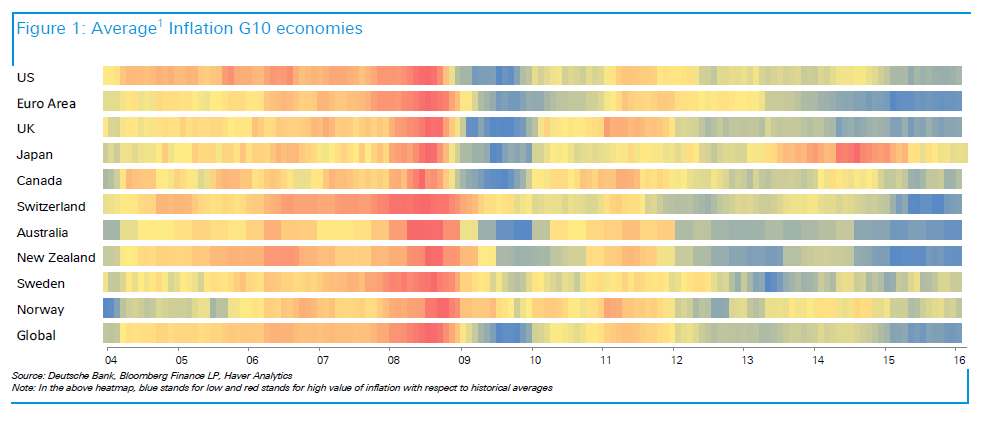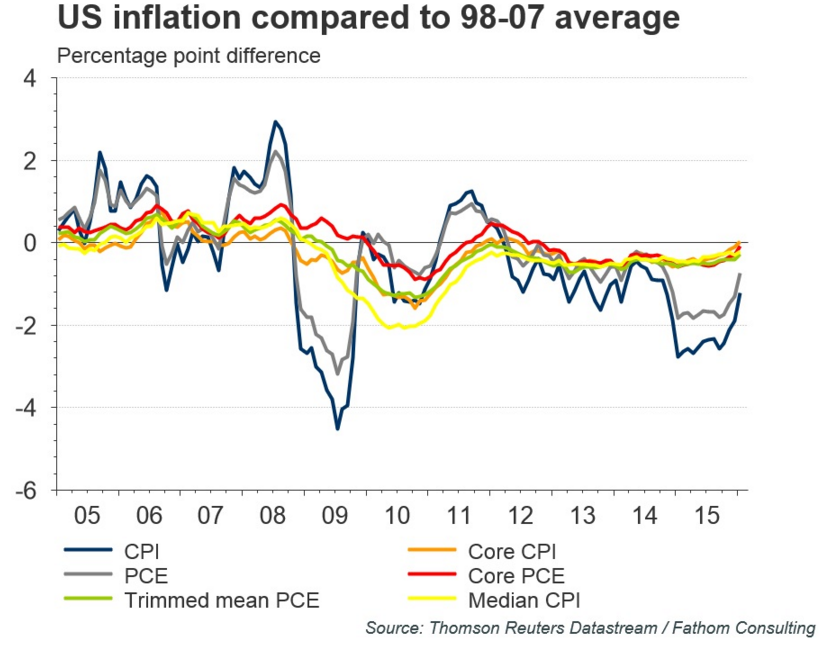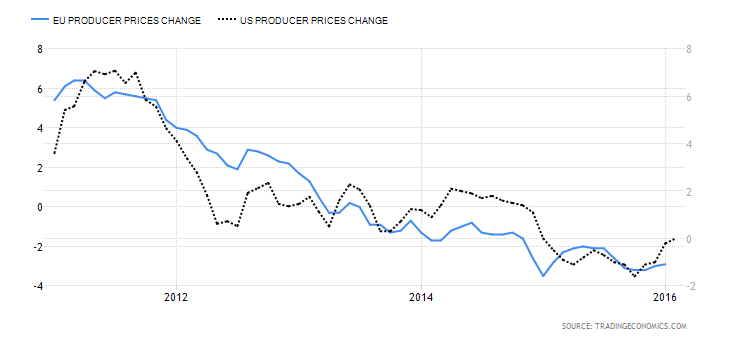Reports of my death have been greatly exaggerated?
We used a Mark Twain quote to good effect in our article the numbers game last week and in a pleasing turn of fate we are able to reference the great man once again this week. Regular readers will be well aware that a lack of inflation and in particular the lack of inflation growth has been one of our major criticisms of both Central Banks and political policies across the developed world.Though we have acknowledged that in certain cases core inflation measures, that strip out volatile items such as food and fuel are much closer to targets, than the broader inflation measures in the same economy. To our mind however to ignore or exclude items, that are essential to everyday life, in an inflation calculation, is akin to saying that’s it’s not wet if you ignore the fact that it’s raining. As such we think we need some new inflation metrics for the modern world that make use of data on real prices paid by consumers, in real time. But that’s a discussion for another day.
Still pretty bleak
The inflation picture on a global scale is still pretty bleak and highly polarised. That is to say that in many developed economies there is little or no inflation. Whilst in the emerging markets there are plenty of examples of inflation effectively running out of control. As these economies wrestle with a combination of financial mis-management, the negative effects of QE in the developed world and plunging commodity prices, as is illustrated below.The chart below plots the rate of inflation in selected Developed and Emerging economies.

Maybe there is a thaw
As we can above see many of the world’s major economies are clustered on the left hand side of the chart and many of those have inflation levels close to or even below zero. This is a problem because once deflationary pressures becoming ingrained into an economy then, like a red wine stain on white table cloth they become very difficult to shift. But in recent weeks there are signs that change may be afoot. Just as the weather has begun to warm up in anticipation of the arrival of spring, so there are signs of thaw in levels of inflation. Though you do have to look quite hard to find them.The graphic below tracks the change in average inflation levels amongst the G10 economies over a 12 year period. Red areas indicate rising inflation (warming up) Blue areas indicate falling inflation (cooling down).
Inflation heat map for the G10 economies 2004 to 2016 (source Deutsche Bank)

Clearly there is more cool blue on the map at the moment than anything else however if we dig deeper into the inflation story we can find the odd suntrap.
We can see this most clearly in the USA
The chart below looks complex but in fact is quite straight forward. It shows a variety of inflation measures, within the USA between 2005 and 2016 and plots them against the average of US inflation between 1998 and 2007. A period during which inflation was present in the US economy.Chart plots selected measures of US inflation 2005/2016 vs average inflation between 1998 and 2007

What this chart clearly shows is that all of these inflation metrics are rising relative to the 1998 /2007 average. And that both CPI and PCE inflation measures (the latter is one the Feds preferred inflation gauges) are gaining upward momentum. The core versions of these two measures (Red and Orange lines) could shortly move in to positive territory relative to the historical average as well.
Research from Deutsche Bank that accompanied the heat map above, highlighted that Norway and Sweden are also good examples of countries that are showing signs of progress on inflation. Indeed Norway is one of the few economies that could legitimately claim to be on the right hand side of our inflation chart at the top of the article. I have my own reservations re Sweden, based on the weaker Krona and negative interest rates that are in effect there. (I wonder whether that may stir up price inflation in Sweden without an accompanying rise in domestic economic growth).
There are also signs that the weakness in PPI or factory gate inflation may be moderating or falling at a slower rate, in two of the world’s major economies. As can be seen in the chart below.
Chart shows the change in PPI or Factory Gate inflation n in the USA and Eurozone.

One swallow does not a summer make
The pickup in inflation, particularly in the USA does give pause for thought. Clearly these are green shoots rather than a full blown flowering, if we may use a gardening metaphor.But the fact that the Feds inflation of target of 2% is now looking more obtainable and perhaps more importantly sustainable, calls into question the central banks accommodative stance at its recent meeting.
Or to put it another way the Fed could be seen to be more concerned with external factors than it is with domestic ones. As was the case in the autumn of 2015.
Since Wednesday’s (16 March) meeting dollar weakness has returned and fittingly a move back to levels last seen in October 2015 could be on the cards. The mid October low was 93.80 on the weekly chart.
We could be in for a very interesting Q2 indeed if US inflation data continues to improve. But yet the Fed continues to stay its hand. Indeed we could see a 180 degree turnaround as markets become more hawkish on interest rates whilst at the same time the Federal Reserve becomes dovish.
The concern then will be that Fed will find itself quite literally behind the curve.
Trading with currencies and CFDs is speculative in nature and could involve the risk of loss. Such trading is not suitable for all investors. Before using the services of Admiral Markets AS please acknowledge the risks associated with trading, terms and conditions of the services and consult and expert if necessary.
Recommended Content
Editors’ Picks
EUR/USD declines toward 1.0850 after US data

EUR/USD extends its downward correction toward 1.0850 in the American session. The US Department of Labor reported that there were 222,000 first-time application for unemployment benefits last week, helping the USD hold its ground and causing the pair to stretch lower.
GBP/USD corrects to 1.2650 area on modest USD recovery

After touching its highest level in over a month at 1.2700, GBP/USD reversed its direction and declined toward 1.2650 on Thursday. The modest USD rebound seen following Wednesday's sharp decline makes it difficult for the pair to regain its traction.
Gold finds resistance near $2,400, retreats below $2,380

Gold advanced toward $2,400 on Wednesday as US Treasury bond yields pushed lower following the April inflation data. The recovery in US yields combined with the US Dollar's resilience after Jobless Claims data, however, causes XAU/USD to retreat toward $2,370 on Thursday.
Bitcoin likely to return to all-time high of $73,949, QCP Capital says

Bitcoin (BTC) price is likely to rally back to $74,000 in the coming weeks, it's all-time high reached in March, riding on three bullish catalysts, according to crypto trading firm QCP Capital.
BRICS, the West and the rest – global trade hubs and de-dollarization

World trade is fragmenting into opposing blocks, warns the IMF. The BRICS and their allies are distancing themselves from the West. BRICS are attempting to de-dollarize and replace SWIFT to circumvent the threat of sanctions.